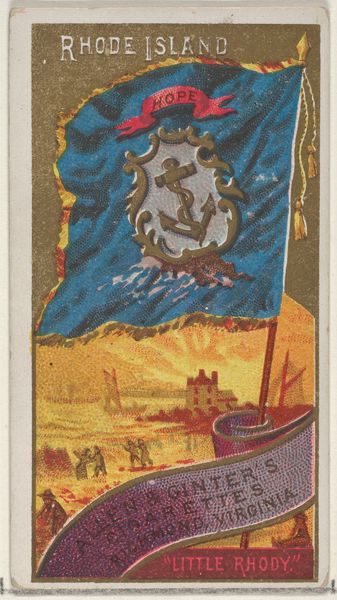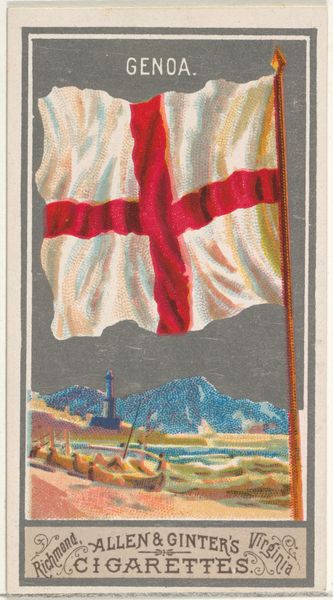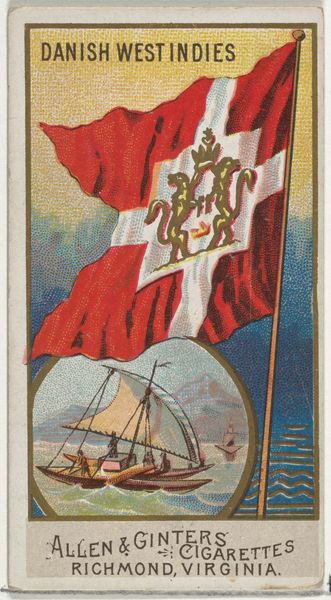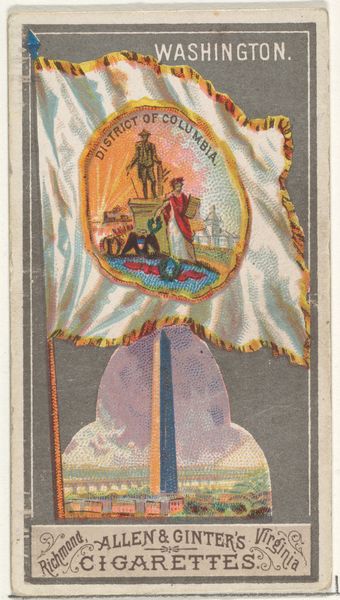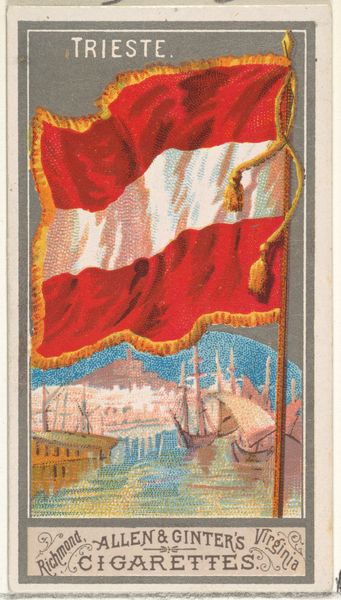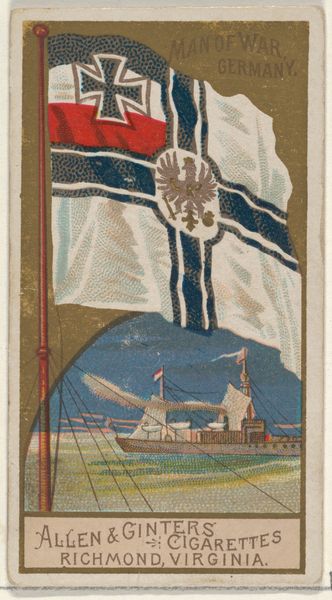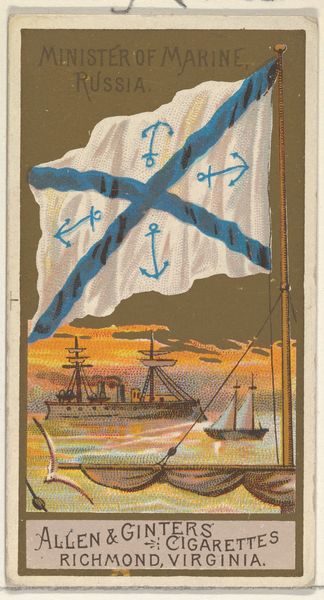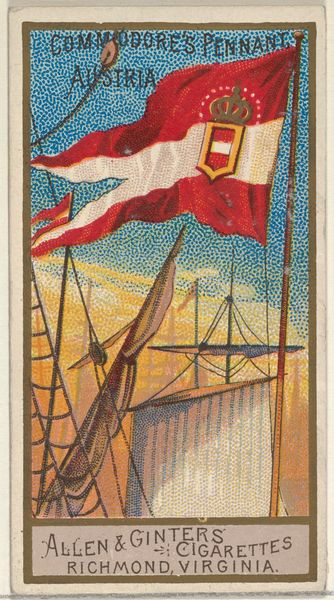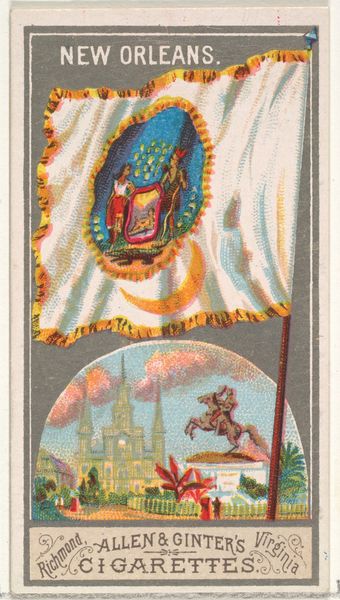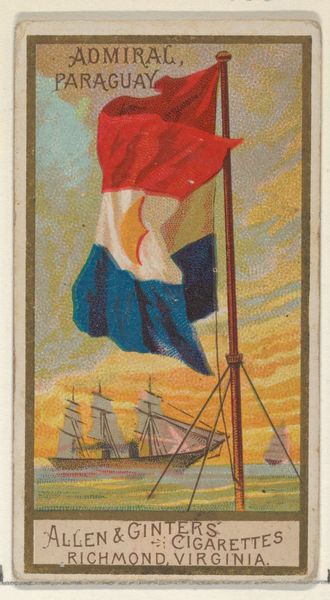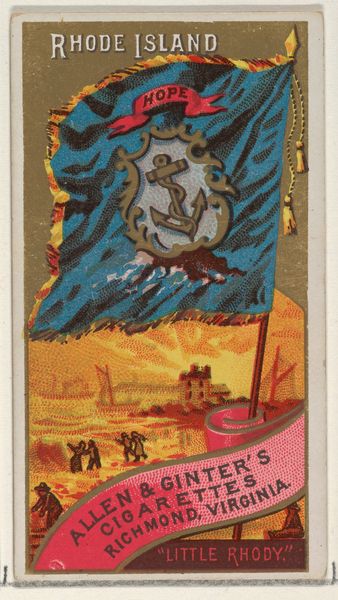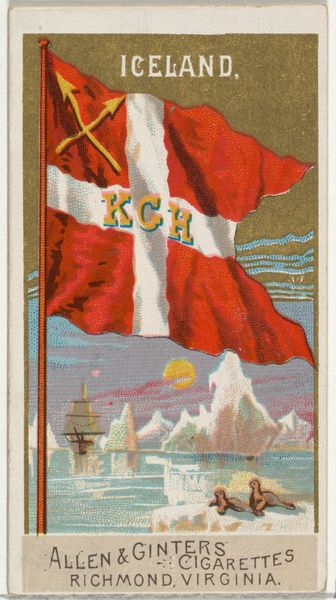
Admiral Third Rank, Japan, from the Naval Flags series (N17) for Allen & Ginter Cigarettes Brands 1886 - 1891
0:00
0:00
graphic-art, print
#
graphic-art
#
water colours
# print
#
japonisme
#
watercolor
Dimensions: Sheet: 2 3/4 x 1 1/2 in. (7 x 3.8 cm)
Copyright: Public Domain
Curator: Today we’re looking at "Admiral Third Rank, Japan, from the Naval Flags series (N17)," a watercolor print made between 1886 and 1891 by Allen & Ginter. It’s a delicate depiction, wouldn't you agree? Editor: Yes, and immediately striking—that stark red circle against the white ground vibrates with tension, amplified by the somewhat sickly, muted sunset tones. I’m seeing a complicated national branding exercise here. Curator: Structurally, the artist divided the plane to generate the intended image with a minimum of artistic flourish, right? Look at the red circle, precisely placed—how the eye travels to the edges from there, caught by a gold border! The simplicity lends it an authority. Editor: True, but its original context is key. This wasn't about pure aesthetics. These were trade cards, designed to sell cigarettes, exploiting Japonisme—a Western appropriation of Japanese aesthetics. The flag here almost sanitizes the colonial relationship and presents it as mere commodity. Curator: I would say there is certainly a conscious artistry beyond commodity, and what cannot be denied is the clear presence of ukiyo-e stylistic markers, right? The simplification, the flat perspective… these give it such clear structure and symbolic purpose. Editor: Of course, but we also need to interrogate how such artistic forms can mask insidious power dynamics. The image celebrates Japan, while simultaneously marketing a product deeply implicated in Western consumer culture and colonial expansion. These flags signaled power and identity but in this instance it becomes part of advertising that serves profit and colonial agendas. Curator: Well, irrespective of this we’re still compelled to look, right? What a strange collision of East meets West, and an object so small, with such significant effect. Editor: Precisely! A reminder of the complex layering that occurs when cultures meet, especially when economics enter the field. Even in something so deceptively simple, such political charge is so evident and can spark quite interesting commentary.
Comments
No comments
Be the first to comment and join the conversation on the ultimate creative platform.
